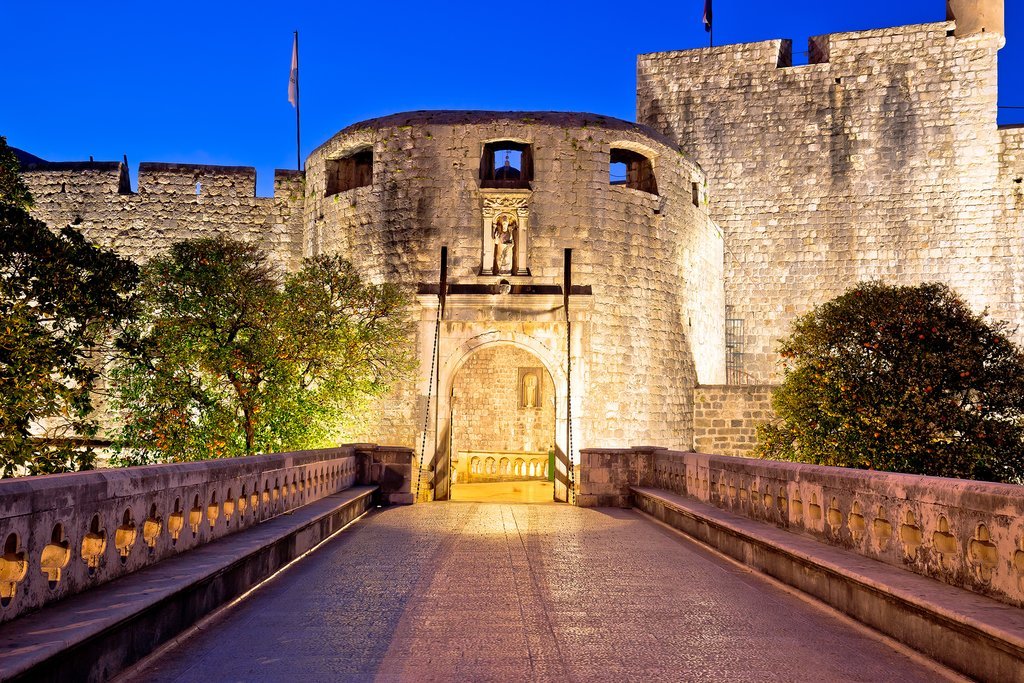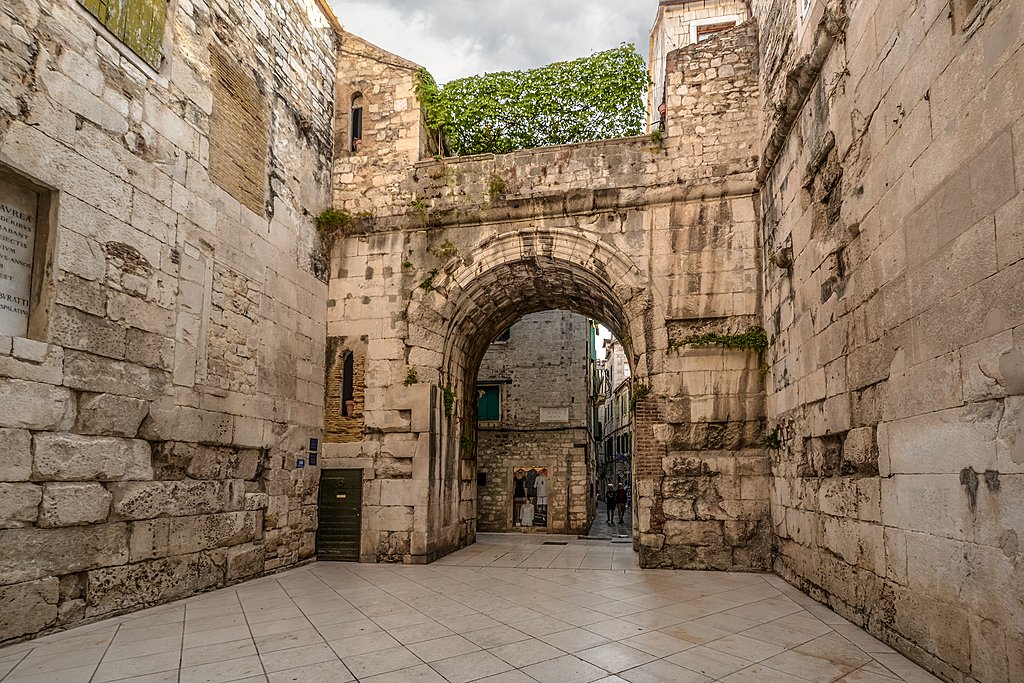Highlights
- Explore medieval Dubrovnik from the vantage of a kayak
- Cycle around the island of Korčula, stopping to sample local wines
- Kayak to the Pakleni Islands, off the coast of Hvar
- Walk Split's 1,700-year-old stone-paved streets, leftover from Roman times
- Hike Vidova Gora, the highest peak in the Adriatic, on Brač Island
Brief Itinerary
| Day | Highlights | Overnight |
|---|---|---|
| Day 1 | Arrive in Dubrovnik | Dubrovnik |
| Day 2 | Historical Walking Tour of Dubrovnik | Dubrovnik |
| Day 3 | Ferry from Dubrovnik to Korčula | Korčula |
| Day 4 | Cycling & Wine Tasting Tour in Lumbarda | Korčula |
| Day 5 | Ferry from Korčula to Hvar; Sea Kayaking around Pakleni Islands | Hvar |
| Day 6 | Sail from Hvar to Blue Cave and Vis Island | Hvar |
| Day 7 | Ferry from Hvar to Split; Visit Brač Island | Split |
| Day 8 | Historical Walking Tour of Split | Split |
| Day 9 | Depart Split |
Detailed Itinerary
Day 1: Arrive in Dubrovnik

Welcome to Dubrovnik! Upon arrival at the airport, you'll drive to your hotel to check in. Depending on your arrival time, the rest of the day will be yours to settle in and explore the historic city on your own.
Often referred to as the "Pearl of the Adriatic," Dubrovnik is a world-renowned city of exceptional charm. Take some time to explore its 16th-century stone walls, including the Minceta, Lovrijenac and Revelin fortresses, visit Onofrio's Fountain and the Church of Saint Blaise (St. Vlaho), and stroll along the limestone-paved Stradun, Dubrovnik's main street to get your bearings. Dubrovnik also offers excellent nightlife and some of Croatia's best restaurants and wine bars.
In the late afternoon, hop aboard a cable car and ride to the top of Srđ Mountain for stunning views of Dubrovnik and the nearby Elafiti Islands. For some exercise, you can walk back down the hill while enjoying views of the city below.
Day 2: Historical Walking Tour of Dubrovnik

Start your day early (around 8 am) to avoid the crowds and to embark on a guided tour of Dubrovnik where you'll meet your expert guide outside the entrance to the medieval city at the 16th-century Pile Gate. Entering Old Town, you'll uncover centuries of the city's rich history as you listen to stories of local life and legends and of the importance Dubrovnik once held in the era of the Republic. Highlights include Onofrio's Fountain, the 15th century Rector's Palace, Luza Square, the Church of St. Blaise (St. Vlaho), and the café-lined streets of Brsalje Street.
After touring the streets and alleys, you'll head for Lovrijenac Fortress as well as the city's impressive defensive walls, the second-largest set of city walls in the world. At certain places the wall rises 75 feet high, offering excellent vantage points for photos of the coastline.
For the rest of the afternoon, explore Dubrovnik and its surroundings on your own or enjoy the afternoon sun on the nearby beaches. Come early evening, you can get stunning panoramic views over the city and Adriatic by taking the cable car up to Srđ Mountain before descending back down for dinner at one of Dubrovnik's great restaurants.
Day 3: Ferry from Dubrovnik to Korčula

Catch a two-hour ferry from Dubrovnik to Korčula in the morning. The afternoon and evening are yours to discover this little island's numerous restaurants, taverns, shops, and bars as you roam the maze of gray stone houses, alleys, churches, and squares.
Enjoy a traditional lunch of lamb and goat in Korčula's Old Town, one of the finest examples of Venetian architecture on the Dalmatian coast. Next, visit the 14th-century Land Gate on top of an elegant staircase, before heading to the St. Mark's Cathedral to admire its strange sculptures of beasts and people. Art enthusiasts will appreciate a visit to the Bishop's Treasury next door for a small but impressive art collection, including works from Carpaccio, Bassano, and Tiepolo. From there, you may wish to visit the unremarkable house thought to be the birthplace of Marco Polo.
If beaches are what you're after, rent a bike or ride the bus the 5 miles (8 km) to the sandy beaches of Lumbarda. Afterward, grab a bite to eat and pair it with the local dry white, Grk, indigenous to Lumbarda and nowhere else.
Chat with a local specialist who can help organize your trip.
Day 4: Cycling & Wine Tasting Tour in Lumbarda

Today, you'll take a cycling tour (private or with a group) across the island from Korčula Town to Lumbarda with stops along the way to visit beaches and local wineries. The tour typically takes 3-5 hours.
Pick up your bike and meet your guide in Korčula and ride out of the town south toward Lumbarda. You will cycle through fields, villages, and wineries, covering asphalt, gravel, and dirt roads with vistas opening up to the Adriatic Sea as well as to the impressive Mt. Ilija on the nearby Pelješac peninsula. This gentle route explores the ancient and historical sites of the eastern side of the island as you work your way to the spread-out village of Lumbarda. Boasting beautiful beaches and centuries-old winemaking traditions, Lumbarda is home to Grk, a white grape variety that will pair well with your lunch or dinner. Some of Croatia's best white wines are produced on Korčula and you won't be left wanting.
Spend some time relaxing on one of Lumbarda's beaches before returning to Korčula Town for the evening.
Day 5: Ferry from Korčula to Hvar - Sea Kayaking around Pakleni Islands

Catch a morning ferry from Korčula to Hvar (1.5 hours) and get settled into your hotel. The most popular island in Dalmatia, Hvar draws visitors for its natural setting, mild climate, and its historic town of the same name. You'll have the rest of the morning to explore Hvar Town, where you can visit St. Stephen's Cathedral or climb the steps to the terrace outside of the historic Arsenal to enjoy views over the harbor and the surrounding area.
In the afternoon, pack your swimwear and towel and head to the beachfront for your guided kayak and snorkel trip to the Pakleni Islands. The islands are the most beautiful part of the Hvar Riviera and are a favorite retreat for locals seeking to escape the summer heat. Altogether, there are 14 wooded and rocky islets, which you will get a chance to explore by kayak.
Day 6: Sail from Hvar to Blue Cave and Vis Island

This morning you'll meet your skipper before sailing to the islands of Biševo and Vis. First, you'll sail to the east coast of Biševo Island, a popular, though often crowded destination, to see the mesmerizing iridescent blue waters of the Blue Cave (Modra špilja). Upon landing on the island, you'll transfer to a cave friendly boat before floating inside the cave to discover the natural phenomena for yourself.
From Biševo, you will then sail to Vis Island to meet with a local guide who will take you to the small fishing towns of Komiža and Vis, showcasing ancient Roman ruins like the thermae (public bath), Levaman Fortress, and St. Jerome's Church and Monastery. Enjoy lunch on the island as well as sample local wines to round out your day of sightseeing natural and ancient wonders.
Day 7: Ferry from Hvar to Split - Visit Brač Island

Board a ferry this morning to Supetar on the north side of Brač where you'll meet your local guide to tour the island. The largest of the central Dalmatian islands, Brač is bursting with historic sites dating back to ancient Greece and the Middle Ages. Brač is also famous for its stone sculptures and quarries, where its stone was used in the construction of Split's Diocletian's Palace and the White House in Washington, D.C.
Begin your tour with a short drive to Škrip. Founded 3,000 years ago, you'll visit the eastern end of this sleepy stone village for some of Brač's most important cultural and historic monuments, including the Museum of Brač in the Radojković Tower. Here you'll learn about the island's interesting past as well as visit the Roman mausoleum, said to be the final resting place of Diocletian's wife and daughter. Next, visit the family-run Museum of Olive Oil and learn the secrets of how it's made as well as sample local olive oils and other products typical for this area: olive paté, salted anchovies, and island cheese.
Continue south to hike Vidova Gora. At 2,553 feet (778 m), Vidova Gora is the highest mountain of all the Adriatic islands and provides a stunning panoramic view over them, including Hvar and Vis, and weather depending, even Italy. Spend some time taking in the view, before driving further south to the coast and to Bol for a dip in the sea off of the Golden Horn of Zlatni Rat beach. After spending a little time relaxing, head back to Supetar for your return ferry to Split where you'll check into your hotel and settle in before taking the evening to explore your surroundings.
Ferry time: 1.5 hours
Day 8: Historical Walking Tour of Split

An ancient coastal city founded 1,700 years ago by Roman Emperor Diocletian, Split's Old Town includes a number of impressive sites, including Peristyle, the Cathedral of St. Dominus, the Piazza, and Diocletian's Palace, one of the best-preserved Roman buildings in the world. Meet your expert guide in Peristyle Square for a walking tour, taking in the 3,500-year-old sphinxes Diocletian brought back from Egypt before exploring the 4th-century Diocletian's Palace and other noteworthy sites.
If there's time following your tour, climb the Romanesque bell tower of the Cathedral of St. Dominus (St. Duje)—considered the oldest Catholic cathedral still in use—for stunning views over the city and Adriatic. Another option for great views is to hike or bike to the top of Marjan Hill. The entire Marjan peninsula is dotted with tiny centuries-old churches, large cypress and black pine trees, and Mediterranean plants and herbs and is commonly referred to as the "lungs of the city". In addition to the stunning vistas, you'll be rewarded with attractions less visited: the Jewish cemetery and 13th and 15th-century churches, St. Nicholas and St. Jerome, respectively.
Afterward, head to Bačvice Beach and relax on the sand warmed by the day's sun before choosing a nearby restaurant for dinner.
Day 9: Depart Split

If you have a free morning before departing, check out the Green Market (Pazar Market). A lively fruit and vegetable outdoor market just east of the Diocletian Palace, this is a great place to see how the locals shop and to pick up some fruit for your flight home. Farmers from the surrounding areas of Split come into town every day to sell their seasonal local produce from sunrise to 2 pm.
Depending on traffic, it usually takes 45 minutes to travel from Old Town to the airport. Best to arrive at the airport at least two hours prior to your international departure (and with some extra time to drop off your rental car, if you have one).
